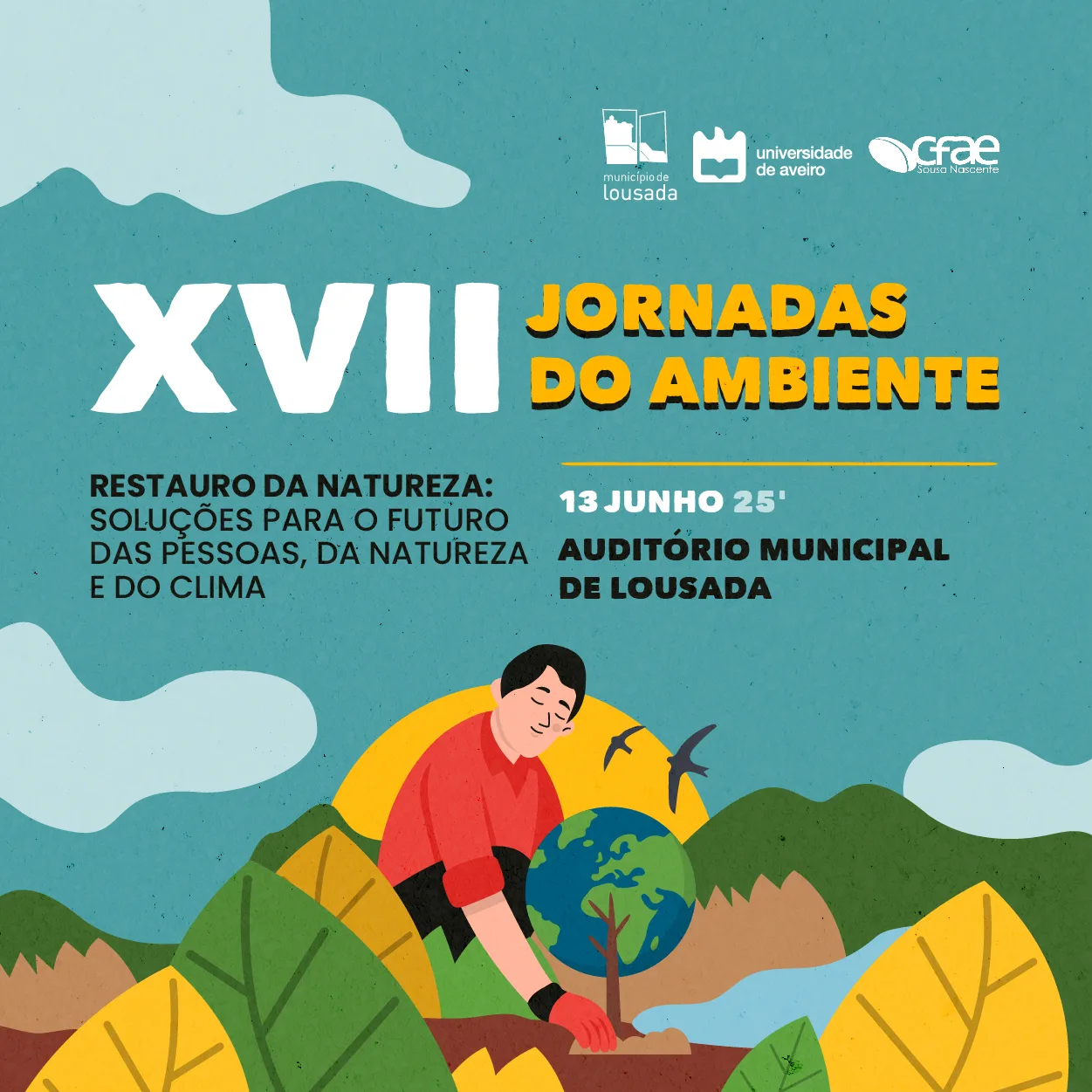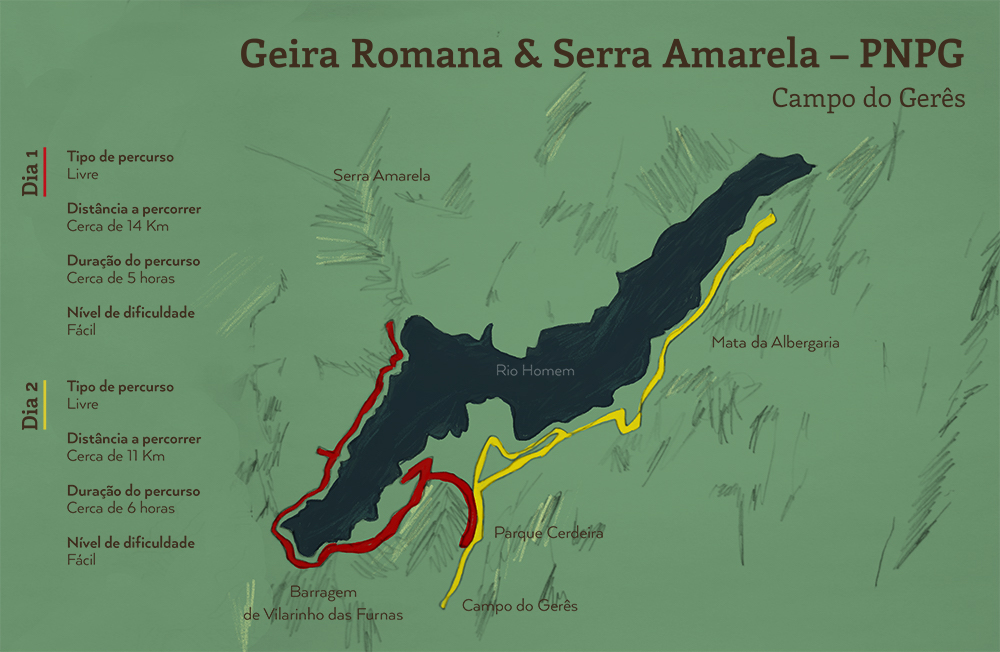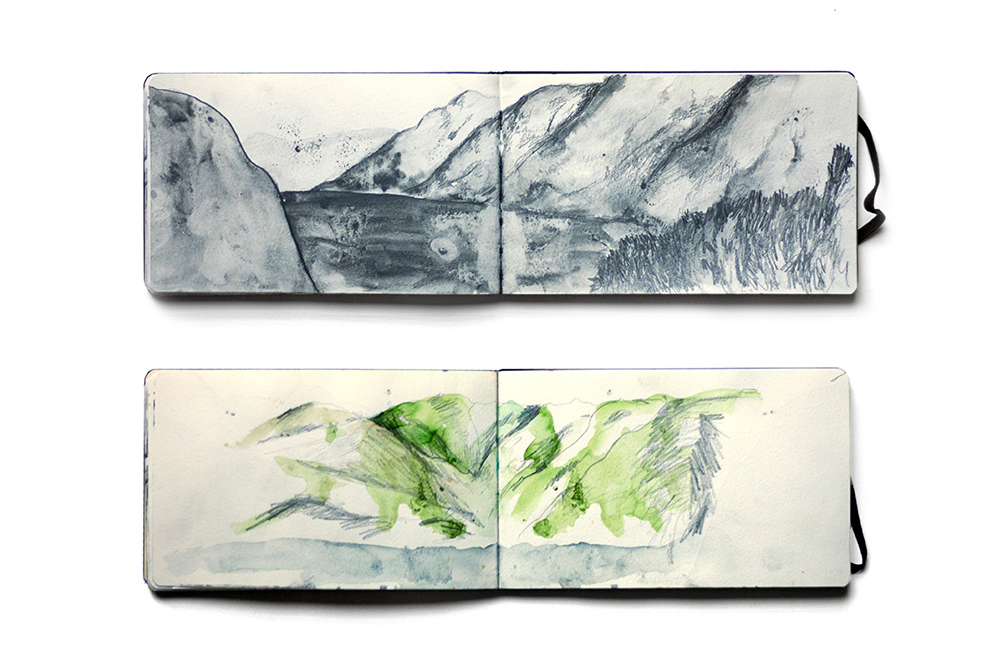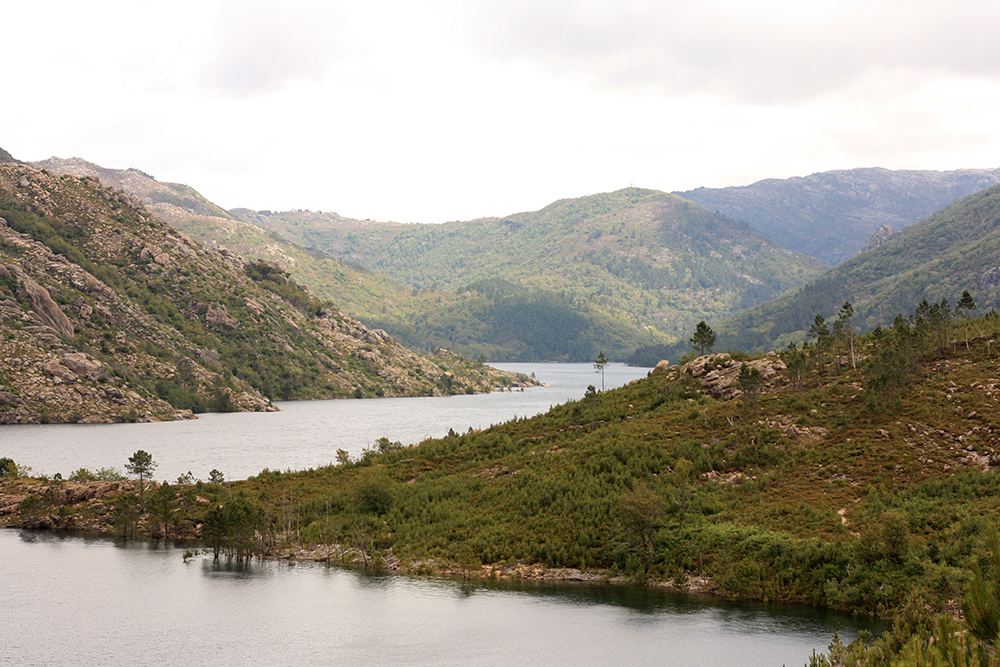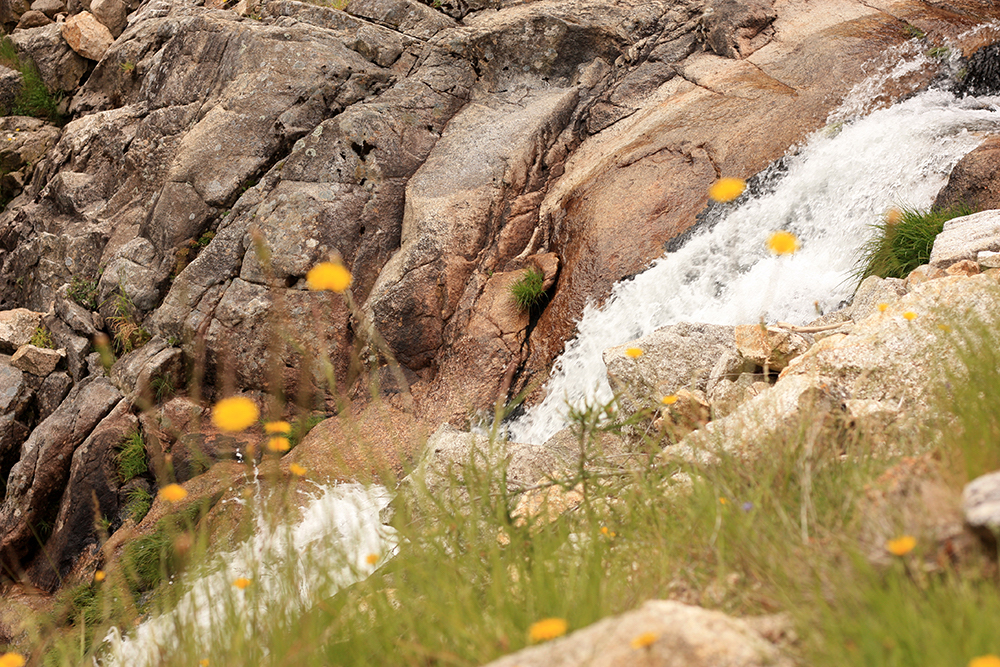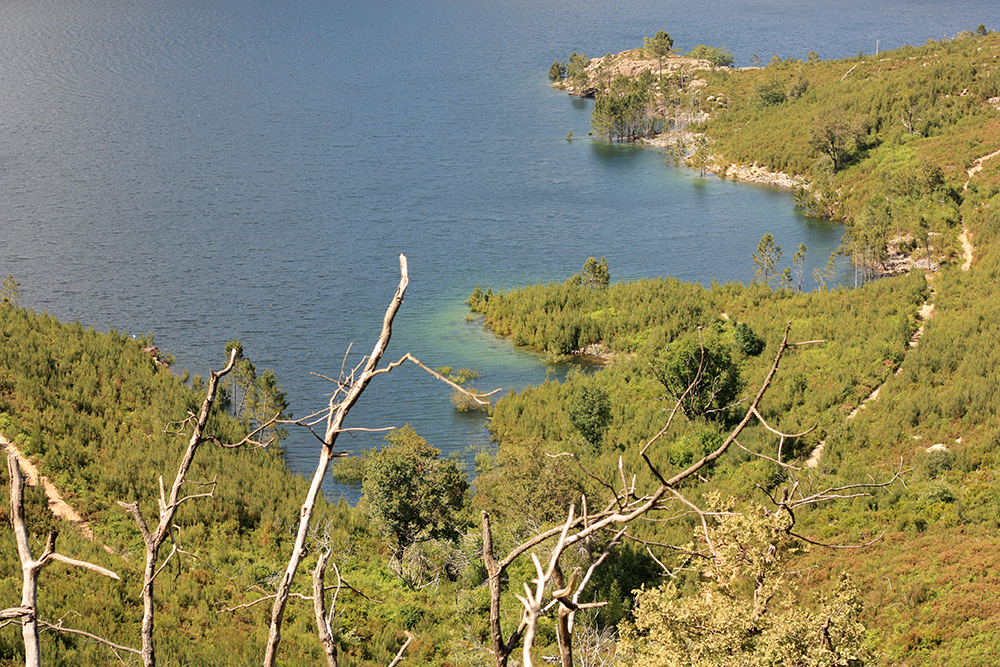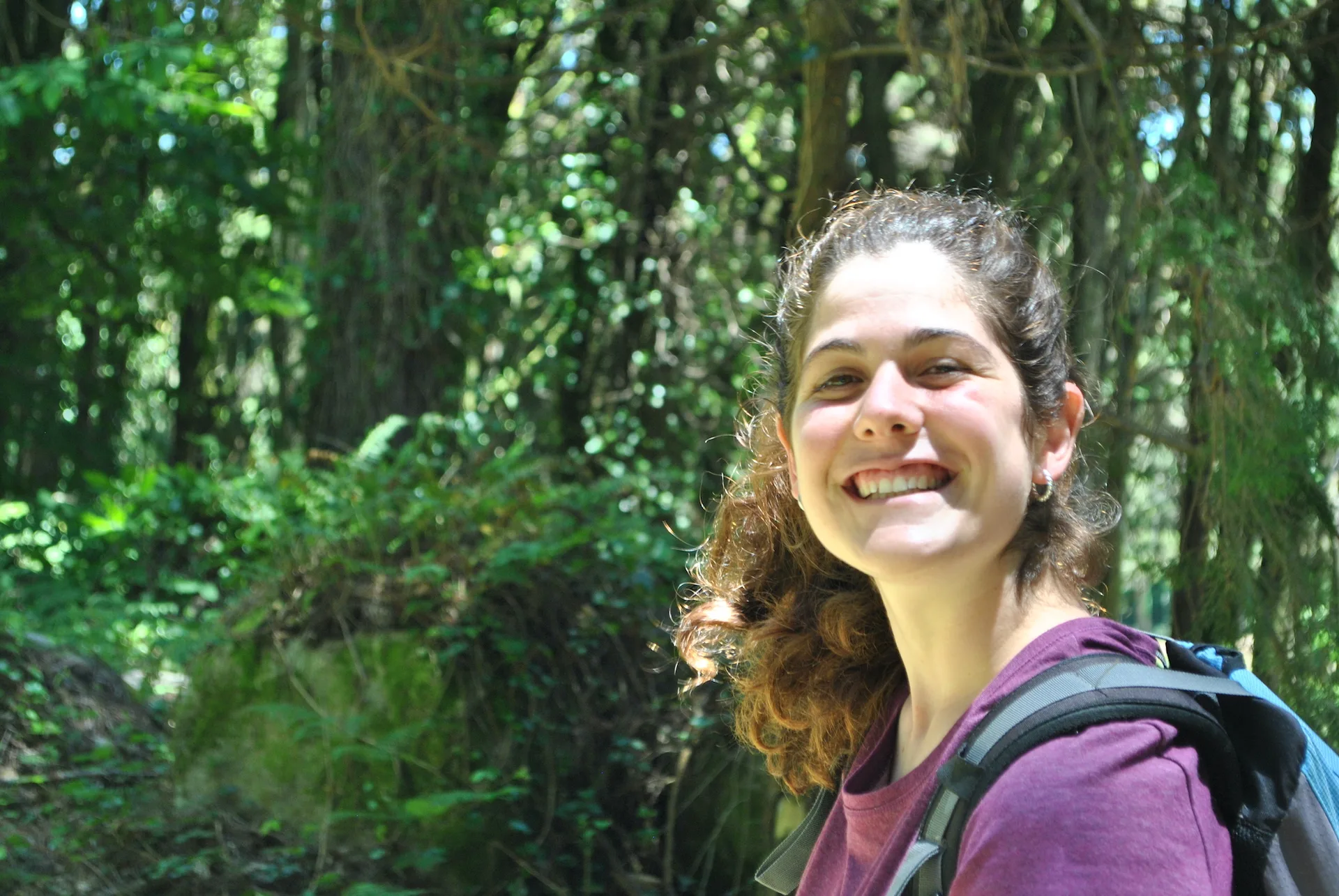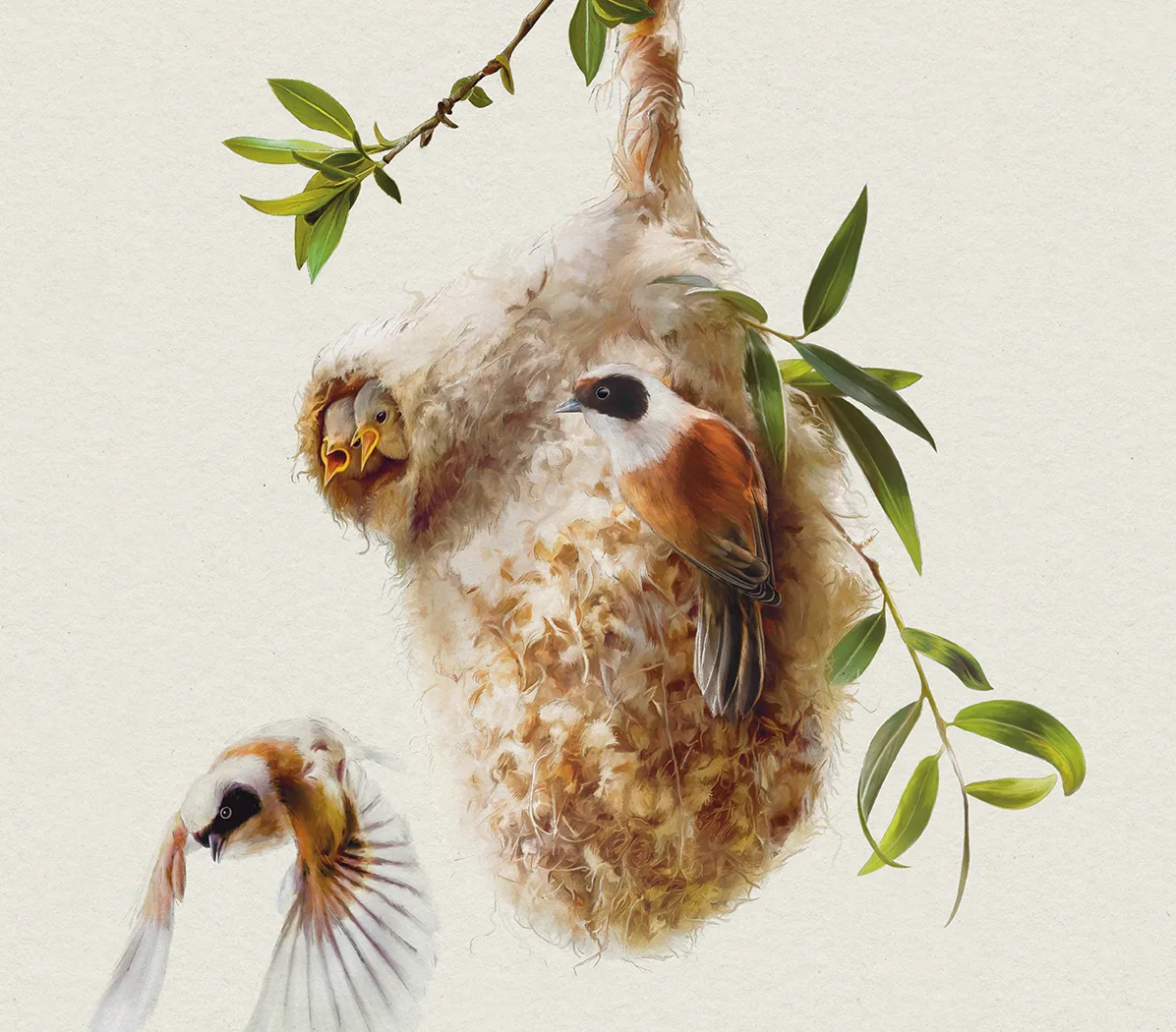Wilder correspondents Cláudia and Vitor took their backpacks and hiking shoes and returned to Peneda-Gerês’ trails. Highlights from this weekend’s hike went from Homem River dam, Serra Amarela mountain range, the Roman Hose route, Albergaria woods to plenty of waterfalls.
In the north of Portugal, Peneda-Gerês National Park lies between northeast Minho and Trás-Os-Montes regions. This protected area is known by its beautiful sights, diversified wildlife and flora and great value of its ethnographic traditions. So we had to come back…
We took off Friday, following the railways up to Braga and then on a small bus to Campo de Gerês village. At arrival, the clock ticks 7pm and the sun starts leaving its way to the yellow moon. We set up tent, prepare a light meal and go to rest since a lot of adventures waits for us in the following day.
Early in the morning we awake surrounded by chirping birds. We prepared our backpacks and start wandering through a free trail, which at the end would sum about 14km. The walk is punctuated by several pauses to observe and draw what is around us. The most important thing is to be here and soak up the landscape.
The dam in the Homem River is full of water due to this year’s generous spring rainfall and so the riverbanks are much higher than we were anticipating. We kept forward and through pine trees and shrubs of gorse we went peeking into the river. Rapidly we decided to go to the north bank, in the foot of Serra Amarela mountain range, trying to see the ruins of Vilarinho-das-Furnas, a mythical village that went underwater by 1971 due to the dam but returns to the surface every time the water level drops.
Everything is so greenish, vegetation hasn’t yet resent from the coming heat and we still can observe ferns, oak trees, hollies and ivies. On the way, several birds follow us, as skylarks (Alauda arvensis), tree pipits (Anthus trivialis), dunnocks (Prunella modularis) and robins (Erithacus rubecula).
At half the way, we stop by a waterfall for a lunch break, beneath the shadows of pine trees, with river views. With energy levels back up, we rush to the village. Unsurprisingly with all the water we’ve seen, it remains underwater like 45 years ago. So we begin our way back to the camping park…
On the next day, we pack everything on our backs and walk through a portion of the Roman Hose, in a 12km hike. This time we follow Albergaria woods, a true enchanted forest were centenary oaks prevail. Human presence is controlled so that disturbances on the ecosystem balance are minimized. The cascades flow abundantly and we can’t resist refreshing ourselves.
We follow to mile 31 in Bico da Gueira (Hose Beak) at S. João do Campo, where one can find another large waterfall between several milestones. Temperature is cool here and so offers a good opportunity for a snack and to resume our way back to the starting point. On the route through the woods, we find a viper that lives in Gerês.
Being with nature allow us to relax and pause from life in the city. Time is only measured by sunlight, rather than by the clock. Drawing enables us to look and try to reproduce what nature has once drawn. Sound recording let us stop and listen, understanding silence and detecting from where the sounds arise. Despite tiredness, we always come back full of energy, creativity and an eager to return once more, since the world by foot is a much larger place with so much more to discover!
[divider type=”thick”]Read more of Cláudia and Vitor’s travels in nature in their blog Vestígios.

